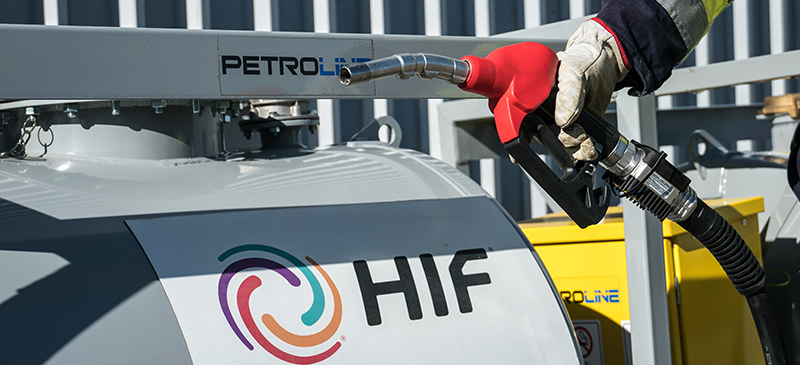- Home
- About us
- News
- Events
- EXPORT Export
-
BUY
Buy
BuyBuyFood and beverage Beef Caviar Dairy Products Fruits Healthy foods Olive oil Processed Foods Rice Sweets, honey and jams Wines ICT Software development Technology products
- INVEST Invest
- COUNTRY BRAND Country Brand
-
INFORMATION CENTER
Information center
InformationCenterInformationCenterReports Country reports Department reports Foreign trade reports Product-Destination worksheet Sectors reports Work documentsStatistical information Classification Uruguay XXI Exports Imports Innovative National Effort Macroeconomic Monitor Tools Buyers Exporters Investors
- Contact
-
Languages
Chilean company to invest millions in Uruguay to produce eFuels from green hydrogen
HIF Global will allocate US$ 4 billion to this project, decarbonizing 150 thousand vehicles annually. This is the most significant investment in the country’s history.
Share:

The Uruguayan President Luis Lacalle Pou confirmed the construction of a green hydrogen and eFuels plant in the department of Paysandú. The project is promoted by a Chilean company Highly Innovative Fuels Global (HIF Global), which will invest US$ 4 billion in the plant's development. The company was also awarded a biogenic carbon capture project at the Paysandú plant of ALUR, a subsidiary of the Ancap Group, Uruguay’s public oil company.
The investment involves US$ 2 billion for the construction of the plant and another US$ 2 billion for the development of wind and solar farms, which will produce the energy necessary to generate green hydrogen. This amount invested makes it the most significant investment in the country’s history.
“This is the first step towards starting operations in Uruguay and continue advancing in the fight against climate change. Our task is now to start the engineering to develop the first carbon-neutral fuel plant in this country,” announced HIF Global’s president, César Norton, in a press release.
In declarations to the Uruguayan newspaper El País, Norton added that in Uruguay, “favorable technical and market conditions for the development of this emerging industry, such as accessible and low-cost renewable energy, abundant availability of CO2 sources, state incentives and a stable legal framework” were found.
The project will employ 1,500 people and, at peak productivity, will provide 3,200 jobs. Construction will begin in 2024, and once completed, the operation phase will generate around 300 direct jobs.
This is a new milestone in Uruguay’s second energy transition, which placed the country at the forefront of green energy producers. Uruguay has already completed the first energy transition of the last decade, which allowed 98% of the electricity demand in a year to be supplied by renewable sources such as wind, biomass, photovoltaic and hydroelectric power.
Uruguay is a world leader in renewable energy with sustained economic growth, social and political stability, forward-looking legislation, and privileged natural resources. With green hydrogen and the promotion of electric mobility, the country aims to complete its energy transformation. Uruguay has favorable conditions for this, such as water and biogenic CO2 from biomass, adequate infrastructure, attractive tax incentives, and the government’s commitment to sustainability. Proof of this is the roadmap for green hydrogen published in June 2022.
“In this transformation that the world is undergoing, Uruguay has done its homework,” as reflected the Uruguayan president during the announcement of the investment he made from the department of Paysandú in northwestern Uruguay.
The construction, which will begin in 2024, is the product of a process in which the government received proposals from more than 50 companies. The Uruguayan Minister of Industry, Energy, and Mining, Omar Paganini, explained that the green gasoline that will be produced would come out of the Uruguay River and be destined for export due to the significant volumes it will generate.
Details of the process and the HIF Paysandú project
Electricity from renewable sources is used to carry out an electrolysis process that breaks the water molecule (H2O) into hydrogen (H2) and oxygen (O). This hydrogen is then combined with biogenic CO2 in a synthesis process to obtain green methanol, which is finally converted into eGasoline.
HIF Global’s project in Paysandú aims to produce 256 million liters per year of eGasoline from producing 100,000 tons of green hydrogen per year and capturing 710,000 tons per year of CO2. This is equivalent to decarbonizing more than 150,000 vehicles per year.
The project considers 1 GW of electrolyzer capacity, which will require the installation of 2 GW of additional renewable electricity generation.
